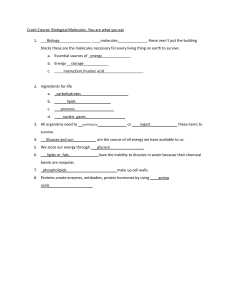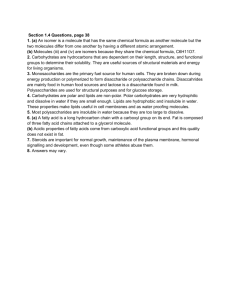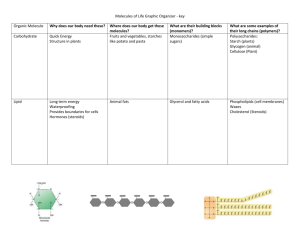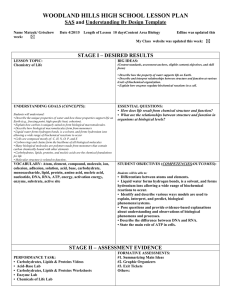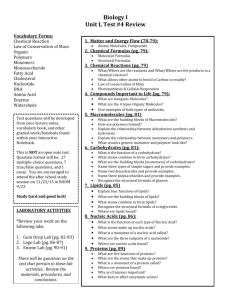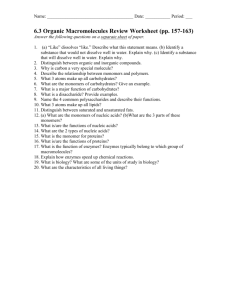Biochemistry Study Guide: Lipids, Proteins, Carbs
advertisement
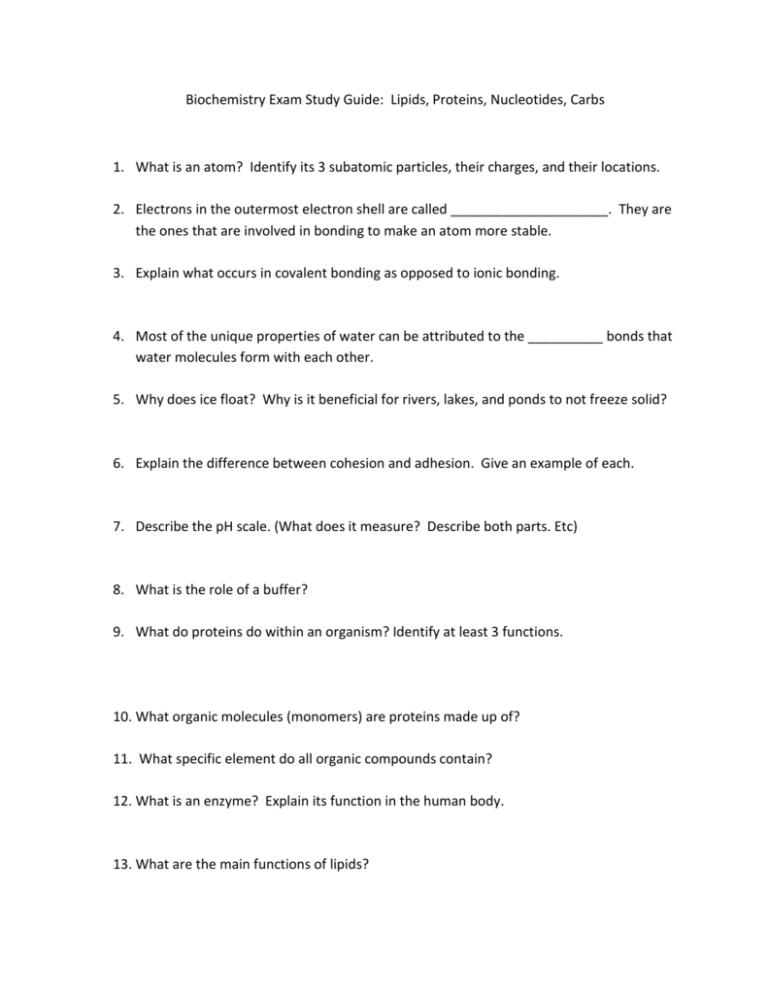
Biochemistry Exam Study Guide: Lipids, Proteins, Nucleotides, Carbs 1. What is an atom? Identify its 3 subatomic particles, their charges, and their locations. 2. Electrons in the outermost electron shell are called _____________________. They are the ones that are involved in bonding to make an atom more stable. 3. Explain what occurs in covalent bonding as opposed to ionic bonding. 4. Most of the unique properties of water can be attributed to the __________ bonds that water molecules form with each other. 5. Why does ice float? Why is it beneficial for rivers, lakes, and ponds to not freeze solid? 6. Explain the difference between cohesion and adhesion. Give an example of each. 7. Describe the pH scale. (What does it measure? Describe both parts. Etc) 8. What is the role of a buffer? 9. What do proteins do within an organism? Identify at least 3 functions. 10. What organic molecules (monomers) are proteins made up of? 11. What specific element do all organic compounds contain? 12. What is an enzyme? Explain its function in the human body. 13. What are the main functions of lipids? 14. Give 3 examples of lipids. 15. What are the monomers of carbohydrates? 16. Identify 3 functions of carbohydrates. 17. Give 3 examples of carbohydrates. 18. What type of molecule stores genetic information and carries the instructions for protein synthesis? 19. What are the monomers of nucleic acids? 20. Explain the phrase “like dissolves like” in terms of polarity. Give an example of a time you have seen this rule in action. 21. What are nucleic acids? 22. Enzymes act upon other molecules. What are these other molecules called? 23. Explain the enzyme-substrate interaction. 24. What do enzymes do (specifically) that causes a chemical reaction to occur more quickly? 25. Name the 2 monomers of lipids. 26. When animals store excess sugar in their bodies, it is stored in what specific form? 27. What type of bond holds strands of DNA together? 28. DNA and RNA are both types of ___________ ____________. 29. Determine whether the following are polar or nonpolar: Water, Oil. Explain the difference between a polar and nonpolar molecule. 30. All living things require a source of __________________ to carry out their life’s processes. 31. What are chromosomes made of? 32. What is activation energy? 33. The portion of an enzyme molecule into which a substrate can fit is called its __________________________ _________________. 34. What type of molecule can speed up a chemical reaction?

